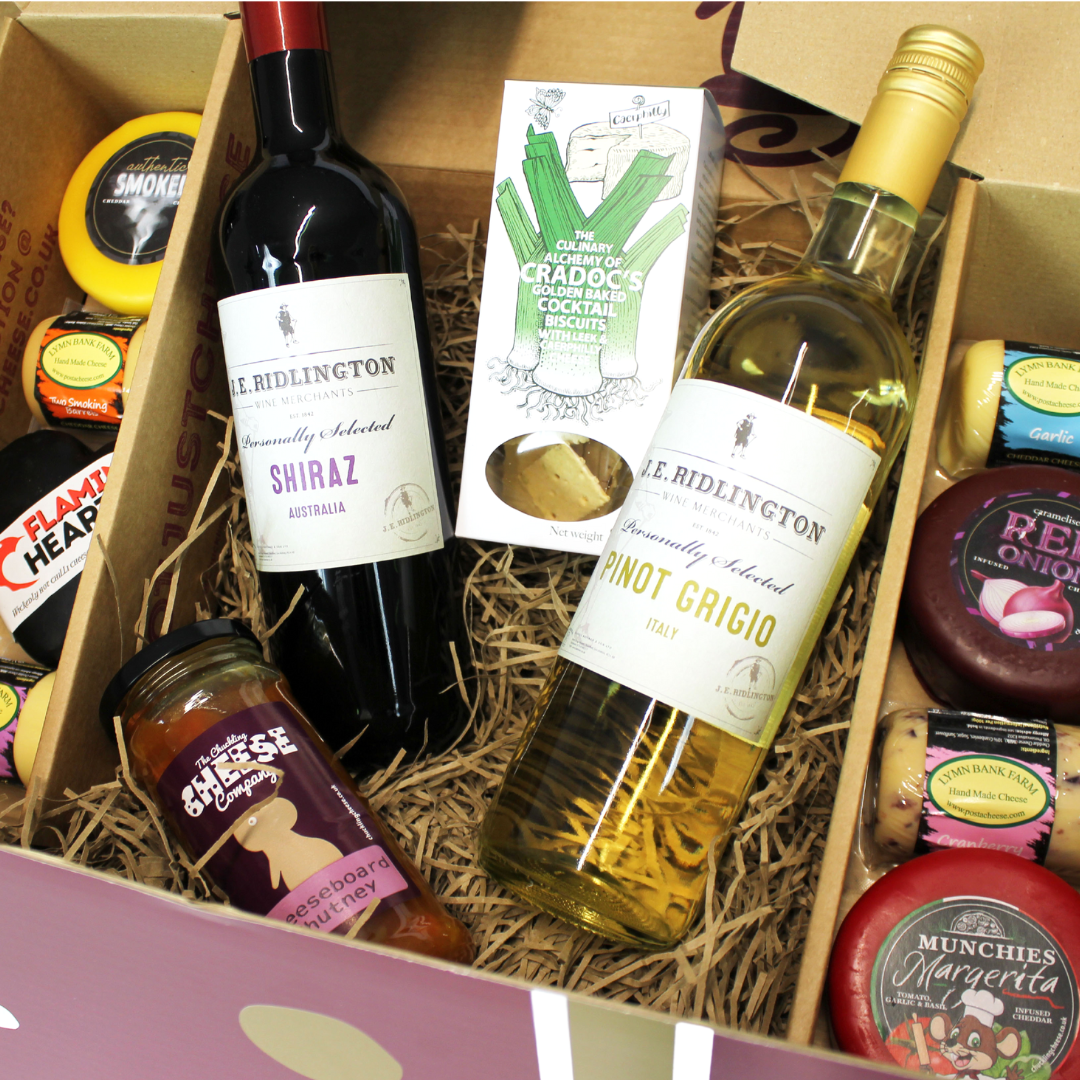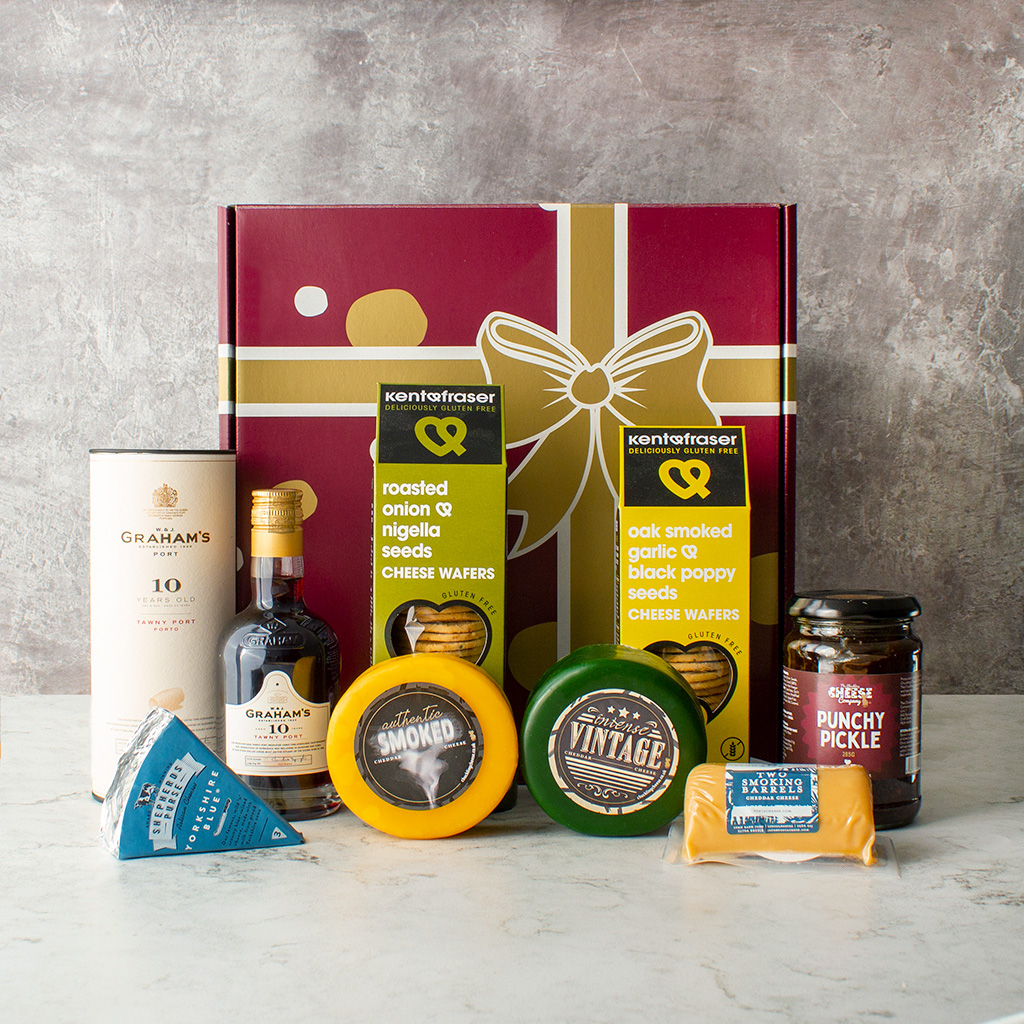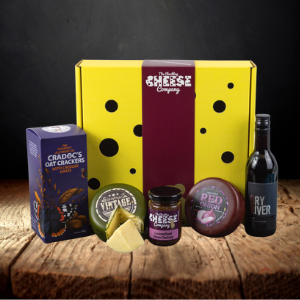The fascinating history of cheese and wine
The pairing of cheese and wine at parties seems like a modern trend, but historians believe it may date back thousands of years. Records suggest cheese and wine have been served together for generations. As a culinary innovation, some scientists suggest it has even changed human physiology.
Back in the 1970s, cheese and wine parties were something everyone enjoyed regularly. They were a part of the great British way of life and most people of a certain age will have fond memories. The best parties comprised several different kinds of cheese, a few bottles of good wine, some fresh bread and savoury biscuits.
A group of friends would gather to eat, drink and be merry. No one had to do any cooking and the cleaning up afterwards was minimal. Now, in the 21st century, cheese and wine parties are enjoying a resurgence in popularity.
Today, it's even easier to host a party, thanks to the internet and online shopping. Order luxury cheese hampers at the click of a button. Even better, you can order cheese and wine gifts, so someone else does all the hard work for you in pairing the best combinations!


History of cheese and wine
To understand why a meal of cheese and wine is such a great tradition, go back in time around 8,000 years, to an age when livestock was first domesticated by herders. Although the exact origins of cheese are unknown, it was eaten in Europe, the Middle East and Central Asia.
Historians believe cheese was actually discovered by accident. The nomadic herders stored milk in containers made from ruminants' stomachs, where rennet - the enzyme that produces cheese - was naturally present. This created the earliest form of cheese. After being strained, salt was added to preserve it.
Archaeological digs have unearthed pottery strainers dating back around 7,000 years that appear to have been used for cheese making.
In September 2018, scientists announced they had officially identified the oldest actual piece of cheese ever found, dating back 3,200 years and excavated from the tomb of Ptahmes in Egypt. Researchers using modern technology found it was made from cow's milk mixed with milk from a sheep or goat.
It was wrapped in cloth before being buried in the tomb. It was tradition for wealthy Egyptians to be buried with a feast and cheese was believed to be fit for a king.
In Ancient Rome, dating back to 753 BC, cheese-making had become a profession. The Roman legions would eat plenty of hard cheese, as it was full of protein and calcium. The word cheese comes from the Latin word "caseus", meaning to ferment. It was also enjoyed by the general population.
How cheese changed our physiology
Scientists believe adult humans were largely lactose intolerant in years gone by. However, cheese-making introduced dairy products to our diet, at first for the early herders, who found there was much nutrition in cheese.
In recent years, genetic studies suggest genes indicating lactose-tolerance spread throughout the herding communities in the Middle East and Central Asia. They mingled with the indigenous hunters and herders in Europe about 7,000 years ago, spreading the lactose-tolerant gene that most people have today throughout the population.
When cheese-making spread to the colder northern European climate, it required less salt for preservation. This led to milder, creamier varieties of cheese and the birth of ripened and blue cheeses. The varieties we know and love today, such as cheddar, camembert, gouda and parmesan, were first made in Europe in the Middle Ages.

When was cheese first paired with wine?
Although no one knows when wine and cheese were first consumed together as a meal, evidence suggests it could have been thousands of years ago. Scientists have found traces of wine and beer in old pottery containers dating from 10,000 years ago.
This suggests our early ancestors made alcoholic drinks from fallen fruit that had naturally fermented in the forests. Bread dates back even further, with a research paper published in July 2017 revealing scientists had discovered remnants of bread crumbs at a site dating back 14,000 years!
This suggests ancient tribes were able to digest alcohol and starch, so there's a strong likelihood that wine, cheese and bread were eaten by our primitive ancestors many thousands of years ago.
Royal banquets
Fast-forward to the Tudor and Stuart royal banquets and you'll find wine and cheese were always on the menu, according to historic manuscripts.
In the 17th-century recipe book, the English Huswife, by Gervase Markham, first published in 1615, banquets would often close with cheese, such as parmesan or ricotta, covered with thick cream and sprinkled with sugar. England had long embraced a dairy culture and cheese was a staple food by this time.
Some later Stuart banquets included freshly-made tarts filled with cheese, known as cheesecakes. In the well-to-do households of England, the after-dinner course included a sweet, spiced, red wine, known as hippocras, believed to aid digestion.
By the late 17th century, new wines had replaced hippocras. They had a lighter fruity or flowery bouquet and were often preferred to the sweet and heavy taste of their predecessor.
Cheese and wine weren't reserved for the rich. In the early 19th century, wine was considered a worthy companion to bread and cheese in taverns across Europe.
The ultimate cheese and wine party
Today, while most people know how to host a successful cheese and wine party and simply order luxury cheese hampers online, some experts have taken it to a whole new level!
Science professor Gary Bader, of the University of Toronto in Canada, has spent his career developing computer programs to determine the relationship between genes and molecules.
However, he has put his skills to different use by designing around 1,000 ideal cheese and wine pairings with a tool normally used to visualise complex gene networks. His more light-hearted research has made him popular at parties, as his tool delves into a web of connections between cheeses and wines from around the world.
Purchasing a cheese and wine luxury gift hamper from Chuckling Cheese Co means there's no need to turn to science for the best pairings, as we've used our years of expertise to do it all for you!





